Decorating
Styling: How to Understand and Experiment With Scale and Proportion
With an eye for perfect proportions, you can create a harmonious space that functions fantastically. Here’s how to strike the right balance
They may be hard to define, but scale and proportion are key to creating an interior that looks ordered, pleasing and thought through. But what do we mean by these terms?
Scale refers to the comparison of objects where the size of one is known – a doorway, for instance, which is usually a standard height and width – and against which we can ‘measure’ other pieces. Proportion relates to the size of two objects with no information regarding their actual height or length. So scale is more absolute, but proportion is relative and more about understanding the interactions between objects within a space.
There are no hard and fast rules about where to position pictures or how low to hang a pendant light, but these tricks and tips can help set you on the right path to a home with a great sense of scale.
Scale refers to the comparison of objects where the size of one is known – a doorway, for instance, which is usually a standard height and width – and against which we can ‘measure’ other pieces. Proportion relates to the size of two objects with no information regarding their actual height or length. So scale is more absolute, but proportion is relative and more about understanding the interactions between objects within a space.
There are no hard and fast rules about where to position pictures or how low to hang a pendant light, but these tricks and tips can help set you on the right path to a home with a great sense of scale.
Craft a controlled mix
Rooms need a combination of big and small items, tall and short pieces, to look interesting and ‘alive’. If everything is the same size, nothing can stand out and the effect is very flat. But try to avoid drastic variations – a controlled mix with a few variations will have a stronger effect than a jumble of different scaled items.
Rooms need a combination of big and small items, tall and short pieces, to look interesting and ‘alive’. If everything is the same size, nothing can stand out and the effect is very flat. But try to avoid drastic variations – a controlled mix with a few variations will have a stronger effect than a jumble of different scaled items.
Play with proportion
Although items that share the same approximate size look harmonious together, it can be fun to add one supersized piece to a balanced scheme to throw the look slightly. This is a great way to add drama to a space, or draw attention to one area of a room.
In this chic dining space, an oversized pendant light draws the eye up and away from the chairs arranged neatly around the table. It helps steer the scheme away from being perfectly matched, giving it a sense of surprise.
Although items that share the same approximate size look harmonious together, it can be fun to add one supersized piece to a balanced scheme to throw the look slightly. This is a great way to add drama to a space, or draw attention to one area of a room.
In this chic dining space, an oversized pendant light draws the eye up and away from the chairs arranged neatly around the table. It helps steer the scheme away from being perfectly matched, giving it a sense of surprise.
Create visual tricks
You can influence the sense of proportion in a room using colour and furniture. For example, curtains hung high above the window and flowing down to the floor will make a ceiling appear higher.
This high room has been made cosier by painting the ceiling and down to the picture rail dark grey to visually lower it, while the white pushes out the walls. The dark floor links with the ceiling, and the hanging Bubble chair and pendant light create vertical lines that offset the horizontal slabs of dark paint and unite all the elements in the space.
You can influence the sense of proportion in a room using colour and furniture. For example, curtains hung high above the window and flowing down to the floor will make a ceiling appear higher.
This high room has been made cosier by painting the ceiling and down to the picture rail dark grey to visually lower it, while the white pushes out the walls. The dark floor links with the ceiling, and the hanging Bubble chair and pendant light create vertical lines that offset the horizontal slabs of dark paint and unite all the elements in the space.
Pay attention to detail
Scale is important in even the smallest of design tasks, such as teaming a desk with a light. This lamp base has the same dark tone as the desk and brings welcome height to the work surface.
As a general rule about lamp size for a work desk, the base of the lampshade should be just below eye level when you are seated at the desk to prevent glare and keep a feeling of balance.
Scale is important in even the smallest of design tasks, such as teaming a desk with a light. This lamp base has the same dark tone as the desk and brings welcome height to the work surface.
As a general rule about lamp size for a work desk, the base of the lampshade should be just below eye level when you are seated at the desk to prevent glare and keep a feeling of balance.
Group objects together
If you have several small objects, such as ceramics or framed photographs, try grouping them together to create impact. These rows of pictures are in proportion to the long sofa in a way just a couple of them wouldn’t be.
Discover more ways to create an artistic wall display
If you have several small objects, such as ceramics or framed photographs, try grouping them together to create impact. These rows of pictures are in proportion to the long sofa in a way just a couple of them wouldn’t be.
Discover more ways to create an artistic wall display
Find symmetry through scale
You don’t need to use matching furniture to create symmetry. Instead, use scale to pair objects. In the living room, position two equally sized but non-matching armchairs by a fire, while in a bedroom, find two bedside tables that have a different design, but are similar in height and weight, as in this scheme.
You don’t need to use matching furniture to create symmetry. Instead, use scale to pair objects. In the living room, position two equally sized but non-matching armchairs by a fire, while in a bedroom, find two bedside tables that have a different design, but are similar in height and weight, as in this scheme.
Accentuate similarities
Too much variety of scale can cause visual chaos in a focused area, such as a bookcase. To make open shelving more attractive, group items of similar scale together, such as paperback books or a collection of glassware. In this home, the books have been turned so their spines face inwards and the uniform colour of the pages is visible for a harmonious effect.
Too much variety of scale can cause visual chaos in a focused area, such as a bookcase. To make open shelving more attractive, group items of similar scale together, such as paperback books or a collection of glassware. In this home, the books have been turned so their spines face inwards and the uniform colour of the pages is visible for a harmonious effect.
Fill the space
Use scale to balance a room and fill it well. A space with tall windows or very high ceilings needs at least one other lofty ingredient to even it out. Consider a tall cupboard, an artwork that runs right up the wall or dramatic pendant lights that drip down from above.
Use scale to balance a room and fill it well. A space with tall windows or very high ceilings needs at least one other lofty ingredient to even it out. Consider a tall cupboard, an artwork that runs right up the wall or dramatic pendant lights that drip down from above.
Build from the biggest piece
When working with scale, start with the largest piece of furniture and then add pieces that fit well with this ‘starter’ item. A table and lamp may be proportionate to each other, but when placed next to a bed or sofa, they may look too large or small. In this bedroom, large wall lights work well with the high headboard, while oversized bolster cushions tie in with the slightly-larger-than-usual theme, so nothing looks out of place.
See more creative lighting ideas for bedrooms
TELL US…
Are you a fan of everything in proportion or do you prefer to throw in a supersized piece? Share your thoughts and photos in the Comments below.
When working with scale, start with the largest piece of furniture and then add pieces that fit well with this ‘starter’ item. A table and lamp may be proportionate to each other, but when placed next to a bed or sofa, they may look too large or small. In this bedroom, large wall lights work well with the high headboard, while oversized bolster cushions tie in with the slightly-larger-than-usual theme, so nothing looks out of place.
See more creative lighting ideas for bedrooms
TELL US…
Are you a fan of everything in proportion or do you prefer to throw in a supersized piece? Share your thoughts and photos in the Comments below.



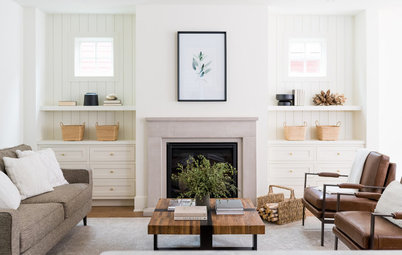
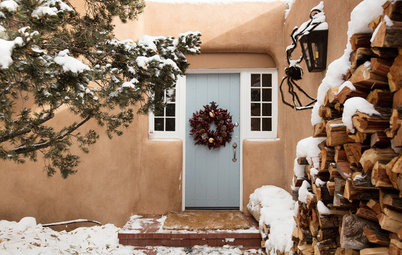
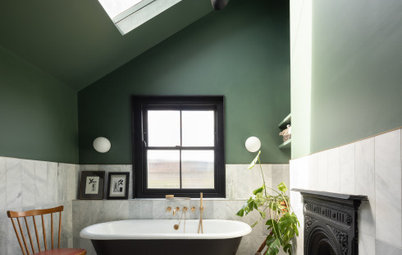
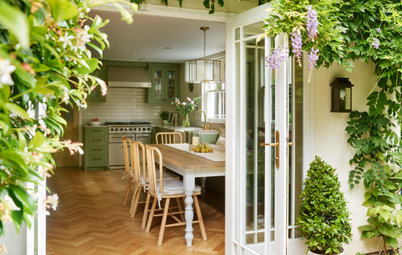
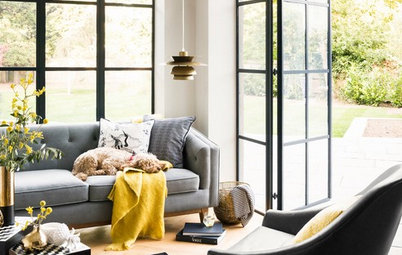
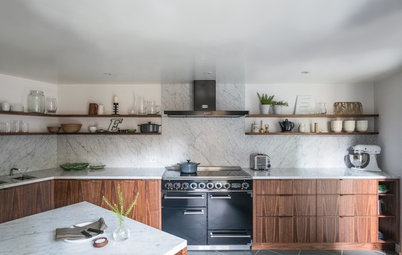
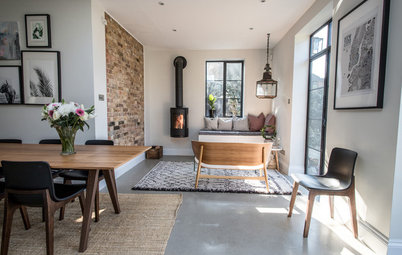
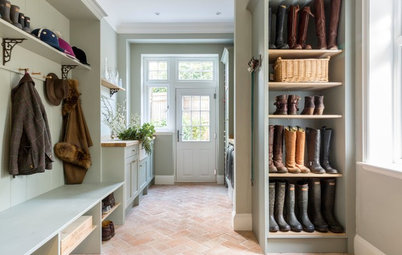
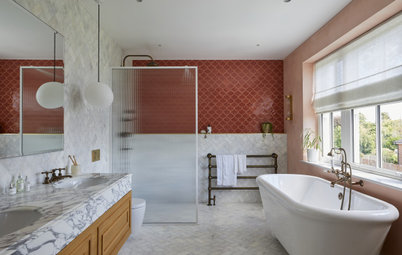
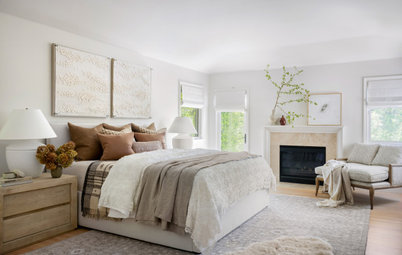
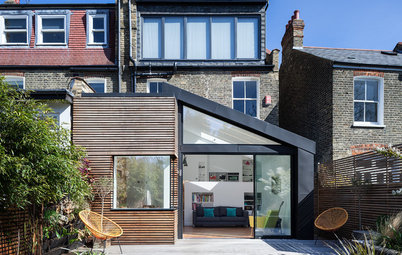
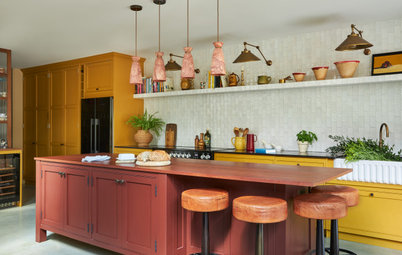
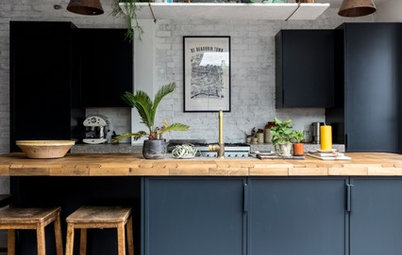
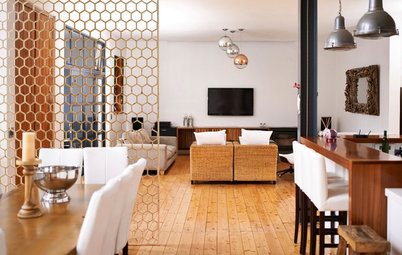
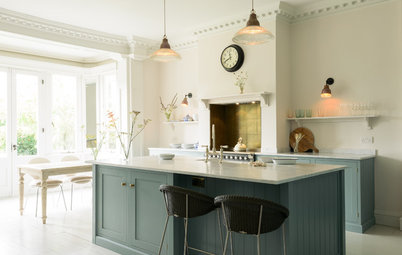


Scale, in most cases, involves the size of objects as compared to our own human scale. The scale of any given room is usually created along established lines. Standardised heights exist for worktops, chairs have been scaled to fit our bodies, and stools are made to slot neatly under breakfast bars. As a result, most of the pieces and objects we add to our homes are pre-designed to look just right, fit well together and suit us.
Nevertheless, it’s important to make sure furniture is scaled to meet your needs. A standard sofa in the living room of a big family, for instance, will look wrong and offer inadequate seating, so a larger-than-usual piece may be more appropriate. However, to make a piece like this work, you will need to use it to inform your other choices – a scaled up sofa will need a scaled up coffee table for example.